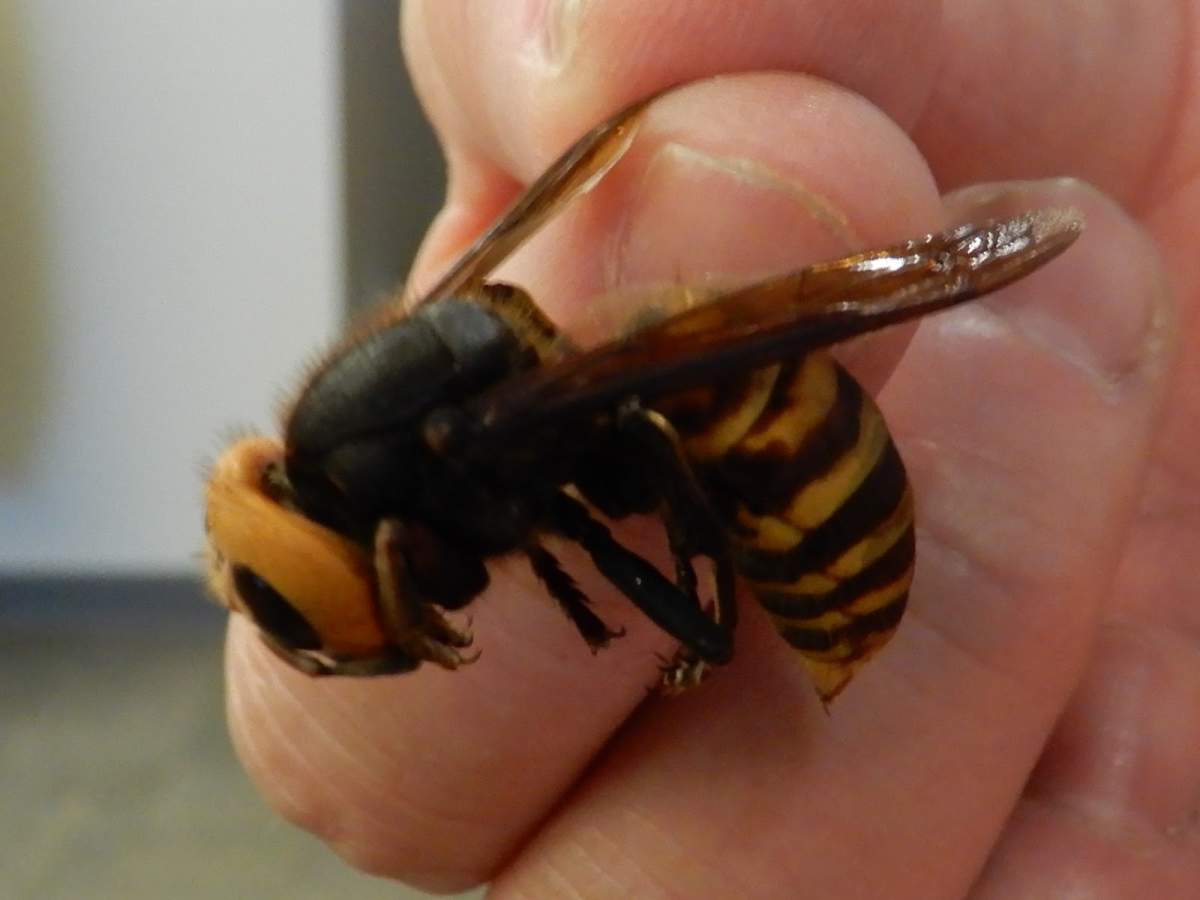Nature is serving up another reason to stay indoors in 2020 with the arrival of the so-called Asian “murder hornet,” an invasive species in the U.S. and Canada with a nickname that puts “Africanized killer bees” to shame.

The nickname comes from the way the giant insects can slaughter entire colonies of honeybees, though they’ve also been linked to a few dozen human deaths each year.
The Asian giant hornet, as it’s officially known, is the biggest, meanest hornet in the world. It’s a AA battery-sized juggernaut on wings, with a massive, toxic stinger, an armoured body and a penchant for biting the heads off bees. It also packs a nasty sting for humans, although it usually doesn’t attack unless its nest is threatened.
The Asian giant hornet typically lives in countries like Japan and China, but several specimens were found in British Columbia and Washington state late last year. Wildlife officials are now investigating fresh reports of the insects on both sides of the border, as the giant hornet queens come out of hibernation to venture out for food.

Asian giant hornets, or Vespa mandarinia, are basically the pirates of the insect world. A handful of hornets will show up at a honeybee hive and go into “slaughter mode,” killing tens of thousands of bees before stealing their young and carrying them back to the hornet nest for food, leaving a pile of headless corpses in their wake.
“They’re like something out of a monster cartoon with this huge yellow-orange face,” Susan Cobey, a bee breeder at Washington State University, said in a recent story for the school’s website.
A Japanese researcher described the insects as “murder hornets” in a recent story by the New York Times, and that nickname appears to have kicked off a flurry of interest online.

The New York Times story sparked concern and horror across the internet, especially as photos began to circulate of the oversized hornet.
“This continent simply isn’t prepared for the horror that is the Asian giant hornet,” one user wrote.
“The term ‘murder hornet’ is not the true name of this pest,” the Washington State Department of Agriculture (WSDA) said in a statement on its website over the weekend in response to the New York Times story. “It is most frequently called the Asian giant hornet.”

Get daily National news
Many insects, including bees and hornets, are named after the geographical region where they’re found.
Experts worry that the Asian giant hornet could be disastrous for European honeybee species in North America, which are already on the decline due to pesticides and colony collapse disorder. The last thing the bees need is a supersized predator capable of killing a whole hive in an afternoon.
“This is our window to keep it from establishing,” Chris Looney, an entomologist at the WSDA, told the New York Times. “If we can’t do it in the next couple of years, it probably can’t be done.”
Several YouTube videos show the Japanese giant hornet, a coloured variant of the species, in action. One such video shows 30 hornets wiping out 30,000 honeybees with Terminator-like efficiency.
There are also fears that North American honeybees won’t figure out how to fight back like the honeybees in Asia. Those bees have managed to kill Asian giant hornets through a tactic called “heatballing.”
The bees basically swarm over the much larger hornet and start vibrating their little bodies, generating enough heat to effectively “cook” the hornet from the inside.
Asian giant hornets are relatively easy to spot because they’re four to five centimetres (1.5 to two inches) long, making them huge by North American standards. They don’t normally attack humans or animals unless they feel like their nest in the ground is threatened. However, swarms have killed dozens of people each year in Asia.
The Asian giant hornet’s stinger can pierce human clothing — including a beekeeper’s outfit — and they can deliver multiple stings without dying. Their stinger is as long as a honeybee’s entire body.
Beekeeper Conrad Bérubé told the Times that he was stung several times while wiping out a colony on Vancouver Island last year.
“It was like having red-hot thumbtacks being driven into my flesh,” he said. Bérubé later felt intense aching in his legs where he’d been stung.
The WSDA recommends exercising extreme caution around Asian giant hornets and reporting any sightings to provincial or state authorities immediately.
There are many species of wasps and hornets in North America, but the Asian giant hornet ought to stand out to the layman because of its sheer size.
It has a completely yellow head, big, black eyes, a black body and a striped black-and-yellow abdomen. It’s much bigger than the likes of a paper wasp, yellowjacket or bald-faced hornet, the WSDA says.
Anyone who sees one of the Asian giant hornets in B.C. is urged to immediately contact the Invasive Species Council of B.C. at 1-888-933-3722, or through its website.





Comments